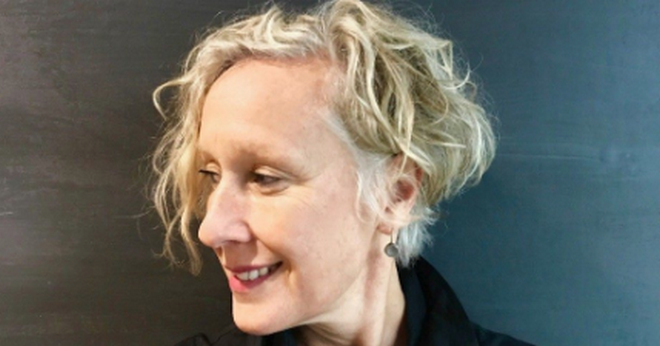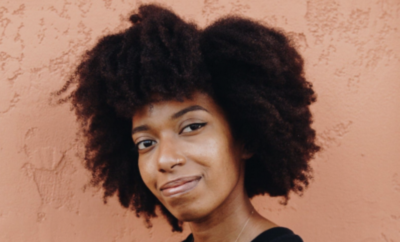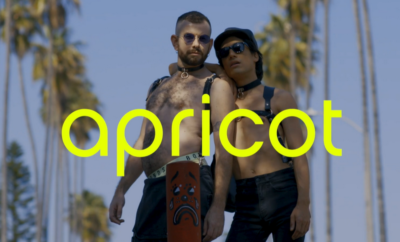
Interviews
Christina Willings – Beauty: Beyond Binary
By: Taylor Gates
Q) What drew you to this subject of non-binary and gender creativity?
A) I’ve been thinking about this subject for a long time. I would say it’s been on my radar since the 80s when I first came out myself as a lesbian. At that time, there was a lot of discourse about gender—about how we as women were relating to the social construct of gender, how men related to the social construct of gender and how that impacted the kind of world we’ve ended up with. It’s been part of my social consciousness for a long time and I remember the moment that I first realized how plastic gender really was—plastic in the sense of easily manipulatable and changeable as opposed to this rigid, monolithic thing. I was reading about how exercising released increased testosterone levels in women and realizing, certainly from a white privilege middle-class perspective, how we have been conditioned over the years to have decreased testosterone levels. Where we’ve ended up may bear no relation to where we began god knows how long ago. That was one thread in the conversation that, when you begin to pull, the whole construct begins to fall apart. Having contact with kids and with parents and with families who are having this experience so early in coming up against these kinds of things. And having the purity of these children saying, “This doesn’t fit for me. This doesn’t feel right. I don’t like it. I don’t relate to this.” It’s not ideological at all. It’s not cerebral at all. They have that purity of deep connection to self and feeling somehow that they can find the permission to speak on what is true for them. I found that so incredibly compelling. I realized that had to be my next film.
Q) That ties into my next question about why you specifically wanted to focus on children. I thought that was a really cool choice because I feel there’s a lot of discourse and critics saying, “They’re too young to know this stuff.” Why did you want to focus on these younger kids?
A) I think that it’s so easy to get caught up in fear-based conversations about how this will impact their lives, how they can possibly know what they’re choosing and how we can engage in medical interventions when it may have implications they’re not aware of. The fact is that none of those things are undertaken slowly or without serious contemplation. And they’re undertaken in various degrees. It seems to me that children have such clarity. The phrase I’ve often heard used is, “Insistence, consistence and persistence.” When they have that so early, I think it cuts underneath preconceptions or ideas of progressive versus non-progressive or inventive versus conservative. There’s something that goes straight to the truth that has nothing to do with how we face these sorts of things. When you’re faced with a child that says, “I’m really unhappy,” and you are given the opportunity to let that child lead, telling you about who they are or telling you they don’t have that freedom and risking the consequences of that, I think it becomes very clear what the choice is in that situation. I chose to focus on kids because I find them so clarifying. It’s so much easier not to get tangled up in the parsing of positions.
Q) How did you go about finding these kids?
A) I really lucked out. I had some connections through friends and just kind of began the process of asking around. I ended up with a woman called Akiko Asano, Fox’s mom, who began an organization for gender creative kids in Montreal, Canada. I pinged her on online and we began to chat. She denied me access to their forum, which is completely appropriate, but she agreed to speak with me in a different way and I began the process of connecting and building trust. This led to me sending for a treatment and sending her a pitch that she agreed to send out to other people that she knew once she trusted me. She then left it up to them to respond to me or not respond to me. It was very organic.
I also connected with a psychologist outside of Vancouver called “Wong” who deals a lot with trans kids and trans youth and I engaged in the same process with him. I spoke with him, emailed with him and they decided if I was trustworthy. They decided I was and agreed to a similar process. I pitched to the parents and other people that they knew. At that point, I met with all the subjects’ parents and engaged in a pretty thorough phase of getting to know each other. From there, they agreed to let me get to know their kids. I got to know them in the same way one would get to know anybody—an established trust in all the usual ways.
Q) How long was the process from the first time you met them to shooting this?
A) I first pitched the film to the National Film Board of Canada in 2015 and then shortly after that, halfway through that year, I began to reach out to people I thought would be good subjects. It probably took me a year and a half to develop the kind of rapport I needed to make the film we ended up with.
Q) How much material did you have to leave on the cutting room floor?
A) A lot of material gets left. Because I decided to come at this in a fairly stylized way, I had to think a lot about how long I could sustain a project like that. I had decided early on not to involve any experts or parents but have this be the kids’ voice and the kids’ experience and supplement that with animation that was inspired by their interests. We wanted to capture the things they were interested in by the underwater sequences. It’s really all of that that helped me get to this place of, “This is going to be a short.” The process of combing through—we had hours of footage. I had two or three hours with Lily and a little more than that with Fox because I interviewed them in different settings. Bex’s were a little less long because they had less stamina and a lot of what I had to do was engage them in play to communicate. We just turned the camera on while I was playing with them. Hours of footage for each kid and then finding little nuggets.
Q) I really liked the involvement of animation. Did you always know you wanted to incorporate that or is that something that was inspired later?
A) When I first talked to the National Film Board, Shirley (the Executive Producer) early on said, “How do you plan on visualizing this?” She encouraged me to take a more artistic approach. We’ve known each other for a long time and she knew that kind of thing would appeal to me—a more art form than a standard documentary. I was so excited about that and we immediately began talking about animation sequences. One of the reasons it seemed like a very good idea was that we were dealing with little children from seven to seventeen. It seemed like a really good way to get inside their experiences without exposing them in ways I didn’t want to expose them and in ways they might not have wanted to be exposed. It seemed like a good strategy to have in my back pocket. “How can we get inside their experiences and how can we make this playful and meaningful for them?” It was something we hit on early on and developed over time. Milo was very interested in all things space. He was absolutely fixated on all things NASA. Now, he’s sort of shifted and has more of an interest in fashion design and cooking, as kids do. [Laughs] There’s an idea of their being between the worlds of the freedom they imagine themselves having and a world of their own self-invention, and the animation takes us there. Space seemed like a really good fit.
Q) Do you think that the animation helped appeal to kids as an audience? I know this premiered at a kids’ film festival in Canada.
A) Yes, at Toronto International Film Festival: Kids Edition. Yeah, I think kids do respond to the animation. Honestly, though, I’ve found that kids respond more strongly to the gender content—at least in terms of what they choose to tell me about afterwards. I think the animation helps them identify. I think it helps them engage because it feels playful and feels like it’s for them, so it helps them connect with the film. In that way I think it’s a nice device, but I find content-wise kids are more resonating with, “Wow—we can be whoever we want.” Sometimes afterward they come up to me and say, “I didn’t know I could be this. I didn’t know there was language for this.” That’s been really gratifying as you can imagine.
Q) Have you had any backlash from parents?
A) No, I haven’t had any backlash. There was one parent who was concerned that the transgender possibility, allowing kids to express that desire fit into a homophobic narrative. They were worried that parents could now push kids into trading genders so that they wouldn’t have to deal with their queerness, but that certainly isn’t my experience. All of the parents of the kids in the film and any other parents I’ve met with would much rather have their kids be gay or lesbian or bisexual than have to deal with wanting to change gender. It’s a much heavier lift. That’s the only negative or challenging feedback I’ve bad.
Q) Is this year your first Outfest festival?
A) Yes, I’ve been to the Frameline Festival in San Francisco, but I’ve never been in Outfest before.
Q) Do you have any advice to other filmmakers that want to create this sort of social narrative content?
A) That’s an interesting question. I wouldn’t presume to give other filmmakers advice, honestly. But I heard once famous filmmaker Albert Maysels say, “Never make a documentary about someone you can’t love.” That struck me really deeply and I really feel that and took that to heart, even when people are making documentaries about very challenging or oppressive situations or positions of injustice. It’s really important to find a place within ourselves to honor the humanity on the other side of the issue. I would always reach for that position and hope that, especially as we go forward and especially in these times. It seems to be the only thing we haven’t consistently tried—reaching for each other. I really hope we can see more of that content.
Q) Do you have any other upcoming projects?
A) None that are fully developed enough to tell you about right now, but I’ve always got things bouncing around. [Laughs] I’m pretty fully engaged in producing other people’s projects, so that’s my focus until something else bubbles up for me.





You must be logged in to post a comment Login